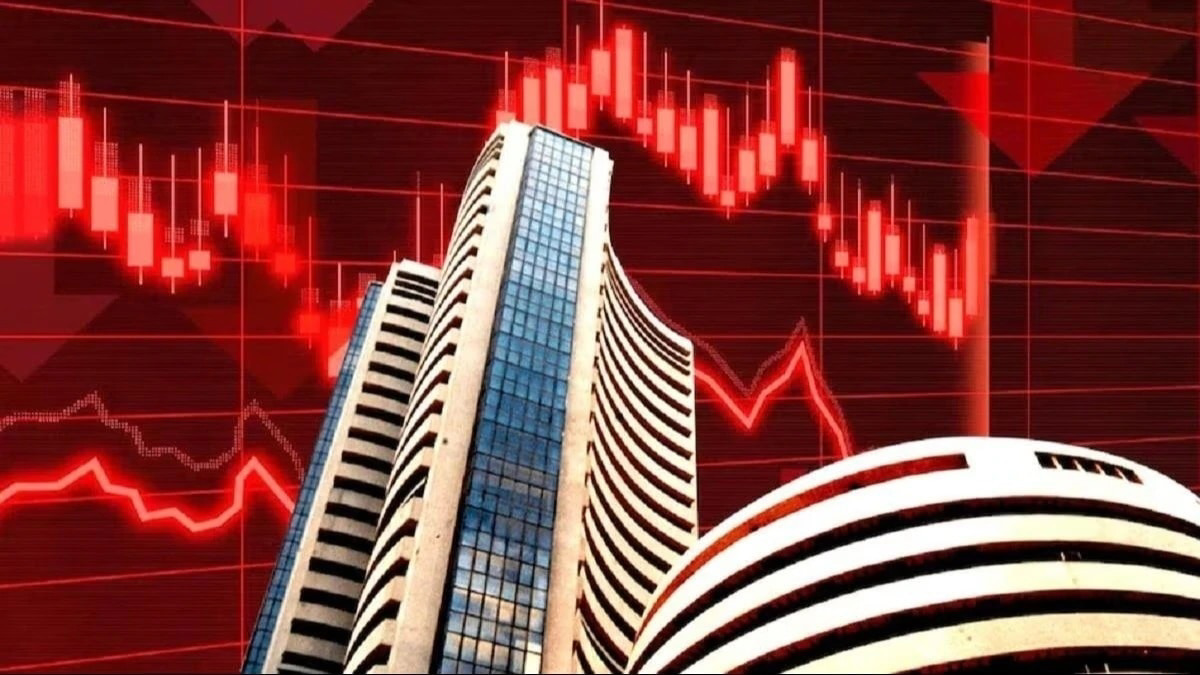
Sensex, Nifty Tumble in Early Trade Amid Rising US-Iran Tensions

 :
| Updated On: 25-Jun-2025 @ 3:22 pm
:
| Updated On: 25-Jun-2025 @ 3:22 pmSHARE
Indian equity markets opened sharply lower on Monday as global risk sentiment turned negative following U.S. air-strikes on three Iranian nuclear facilities, an escalation that rattled investors already wary of Middle-East tensions. By 9:53 a.m. IST, both frontline indices had lost about 1 percent: the S&P BSE Sensex tumbled 791.58 points to 81,616.59, and the NSE Nifty 50 slid 244.25 points to 24,868.15.
Geopolitics sets the tone
Traders tracked overnight weakness in U.S. and Asian markets after news broke that American forces had bombed Iranian sites. While oil prices rose only modestly—suggesting no immediate supply shock—the spectre of a wider conflict and potential Iranian retaliation pushed investors to cut equity exposure and rotate into perceived havens.
Dr V.K. Vijayakumar, Chief Investment Strategist at Geojit Financial Services, noted that, in the short run, the sell-off could remain contained unless Iran’s response significantly damages U.S. assets or inflicts casualties, which could “trigger a far larger U.S. counter-blow and deepen the West Asian crisis.” Until the magnitude of Iran’s reaction becomes clear, markets are likely to stay volatile, he said.
Market breadth and sector moves
Selling was broad-based. The Nifty Midcap 100 dipped 0.26 percent and the Nifty Smallcap shed 0.22 percent, indicating pressure across capitalisation tiers. Volatility jumped: the India VIX—often dubbed the fear gauge—spiked 4.86 percent, reflecting rising demand for hedges.
Only one of the NSE’s thematic indices started in the green: Nifty Media inched up 0.18 percent on scattered buying in large broadcasters. Every other major sector opened negative:
-
Nifty IT led losses, down 1.26 percent as investors worried that a geopolitical flare-up could slow U.S. discretionary tech spending—the sector’s biggest revenue stream.
-
Nifty Auto (-0.91 percent) and Nifty Financial Services (-0.84 percent) fell as risk aversion swept across cyclicals.
-
Nifty FMCG slid 0.84 percent despite its defensive reputation, dragged lower by Hindustan Unilever (-1.64 percent).
-
Private-sector banks slipped (Nifty Private Bank -0.74 percent) amid a flattening domestic yield curve and concerns that higher oil prices could stoke inflation and delay rate-cut hopes.
-
Real-estate, healthcare, oil & gas, pharma, consumer durables, metals and PSU banks all lost between 0.27 percent and 0.55 percent.
Stock-specific highlights
Only a handful of large-cap stocks resisted the downward pull:
-
Bharat Electronics Ltd. (BEL) gained 1.64 percent, continuing a recent rally on robust order inflows and defence-spending optimism—ironically benefiting from geopolitical tensions.
-
Bharti Airtel edged up 0.39 percent, supported by sustained growth in 5G subscriber additions and improving average revenue per user (ARPU).
The decliners far outnumbered gainers:
-
Infosys sank 2.01 percent, pacing the IT rout.
-
Hindustan Unilever fell 1.64 percent on concerns that higher crude-linked input costs could crimp margins.
-
Asian Paints (-1.30 percent) and HCL Tech (-1.24 percent) also weighed on their respective sectors.
-
PowerGrid slipped 1.19 percent, tracking profit-taking in utilities.
Technical and macro backdrop
Technicians noted that both Sensex and Nifty opened below key short-term moving averages, adding mechanical selling pressure from trend-following funds. Yet early volume was moderate, suggesting institutions were monitoring developments rather than capitulating.
From a macro perspective, crude’s muted rise implied limited immediate threat to India’s trade deficit or the rupee. Bond yields were steady in early Mumbai trading, with the 10-year benchmark at roughly 7.03 percent. Still, dealers said that a sharper spike in oil or a severe Iranian response could reignite fears of imported inflation, complicating the Reserve Bank of India’s path to future rate cuts.
Outlook
Market sentiment for the rest of the week hinges on three variables: (1) Iran’s retaliatory stance—any attack on U.S. assets could trigger wider conflict and deeper equity sell-offs; (2) oil price trajectory—spikes above $90/bbl would hurt India’s macros; and (3) global central-bank signals—investors will parse comments for clues on whether geopolitics might delay easing cycles.
In the absence of an immediate escalation, strategists expect bargain hunters to re-enter select large caps, especially banks and defensives, as India’s domestic growth and earnings outlook remain relatively strong. But until clarity emerges, heightened volatility and sector-specific rotations are likely to dominate trading screens.